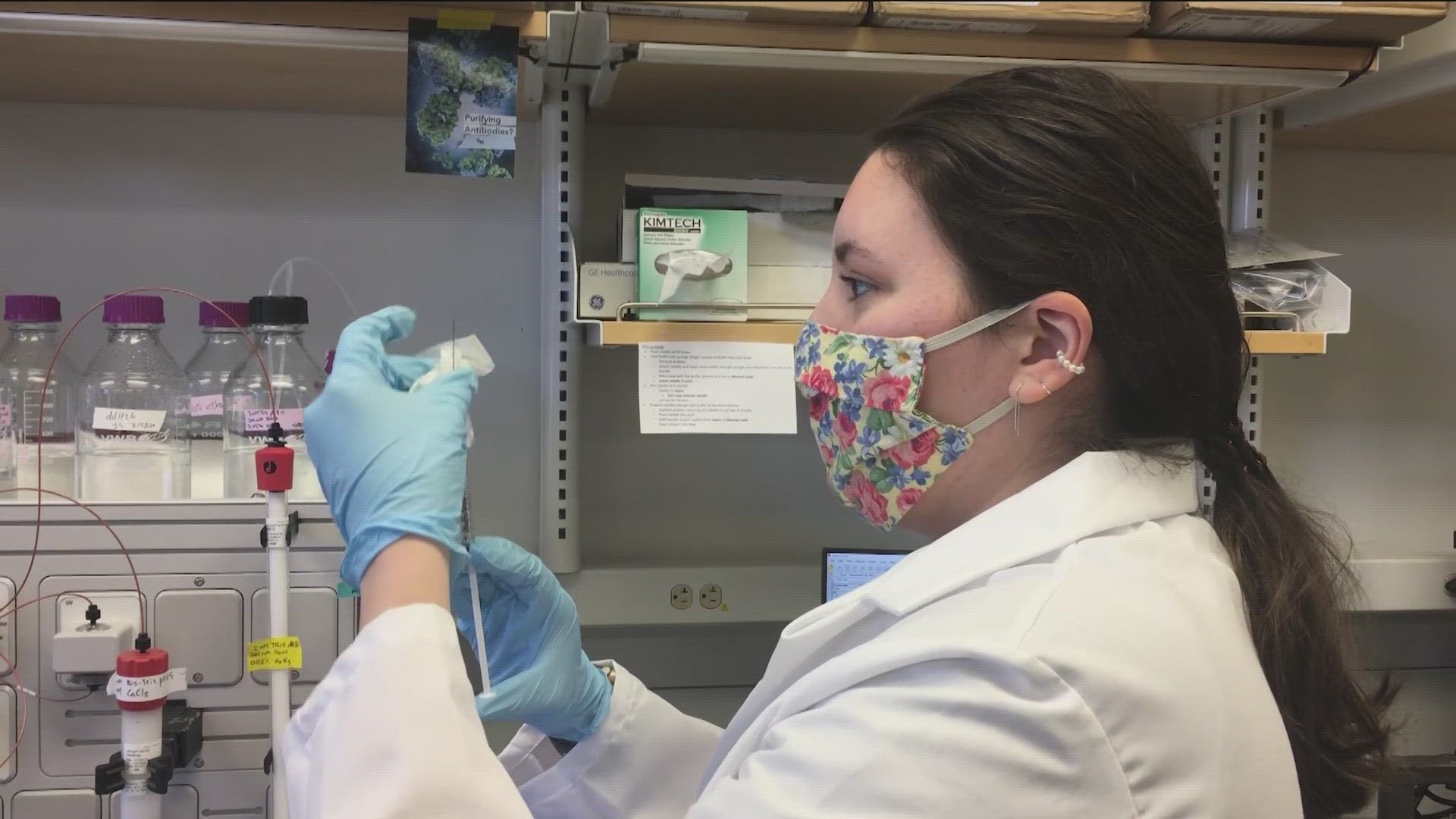AUSTIN, Texas — Innovation, constant ups and downs and failures. That was the procedure University of Texas at Austin professor Jason McLellan followed as he progressed to help lay the groundwork for an RSV vaccination – a process that he started working on back in 2008.
McLellan created a 3D map of proteins on the surface of the virus.
"We could then go in and make changes and modifications and engineer the protein to stay in the initial confirmation that's on the surface of the virus, inject that and use that as a vaccine," McLellan said. "We had to determine multiple structures, tests [and] hundreds of variants in order to come up with the combination of substitutions that would lock the protein in the confirmation we want."
The Centers for Disease Control and Prevention (CDC) reports RSV has led to over 10,000 deaths among adults 65 and older and 300 deaths in children younger than the age of five. With infections typically on the uptick during the fall and winter months, Austin emergency room Dr. Natasha Kathuria has a firsthand look at how the virus can devastate families and has high hopes for the vaccine.
She said the recent FDA approval of the first RSV vaccine for pregnant people comes at a great time.
"It's actually really fantastic timing. And so, we're hoping that if enough moms get it, we'll have enough of a reduction on the burden of hospitals and just these babies and keeping them healthy," Kathuria said.
Seeing his work being used not only inspires McLellan in the lab but also motivates him to keep making progress and doing his part to help others.
"That's one of the reasons I went into science, is to try to make some difference, some impact on human health and to actually help contribute to the development of these vaccines that are going to save a lot of lives, decrease a lot of hospitalizations," McLellan said. "It means a lot."
McLellan's design also helped create the vaccine for COVID-19. Similar strategies are now being applied to other pathogens and viruses.

